There are other reminders of the country's great suffering in media, but large scale monuments to the war dead are rare. They're mainly confined to the all too common war cemeteries that line the nation's roads. And these cemeteries don't count South Vietnamese military or civilian casualties.
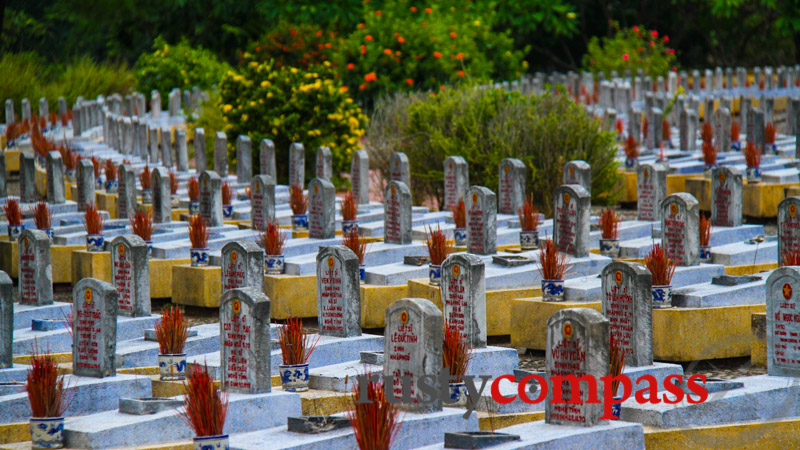
Photo: Mark BowyerThe massive Truong Son Cemetery in the DMZ remembers the terrible toll suffered by the victors.
I only need to think of Australia and its ubiquitous obelisks and other war memorials to appreciate how understated Vietnamese commemoration is. The fact that war is so deeply etched in Vietnam's past may diminish the need for physical memorials. Perhaps Vietnamese don't need grand reminders of the frequency of war and hardship in their history.
Just as surprising as Vietnam's commemorative restraint in respect of grand war memorials, is the presence on Vietnamese soil, of a handful of monuments that allow remembrance of foreign forces - former enemies.
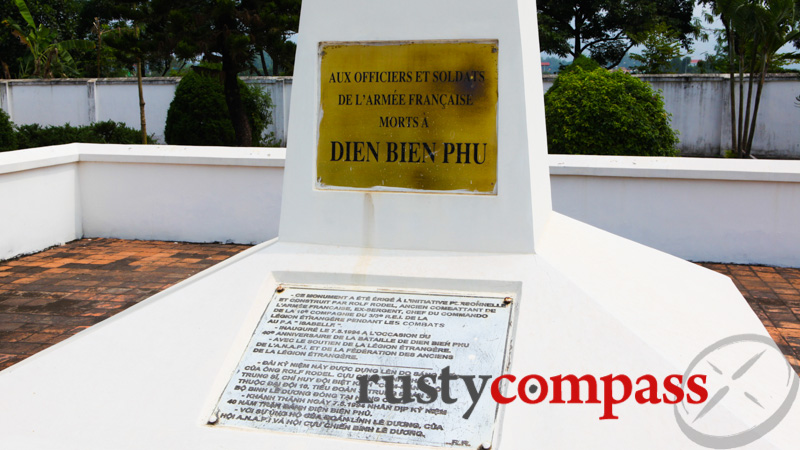
Photo: Mark BowyerFrench monument, Dien Bien Phu
At Dien Bien Phu in the remote northwest, a small obelisk erected in the 1990s remembers French soldiers that served in the fateful 1954 battle that author Bernard Fall described as "hell in a very small place".
The battle at Dien Bien Phu signalled the end of French colonialism in Vietnam and was the first modern era military repudiation of a colonial force.
Outside of Vung Tau in Vietnam's south, a replica white cross in the middle of a rubber plantation remembers 18 Australian servicemen killed in the Battle of Long Tan twelve years after Dien Bien Phu in 1966. More than 200 Vietnamese died in the battle.
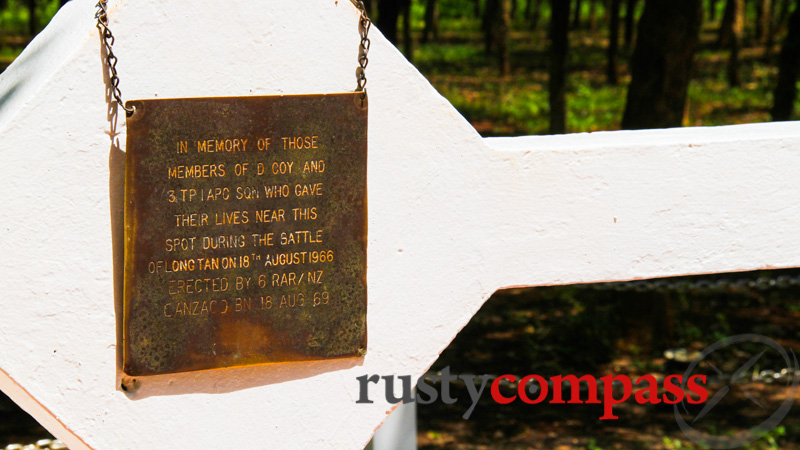
Photo: Mark BowyerThe Long Tan Cross near Nui Dat.
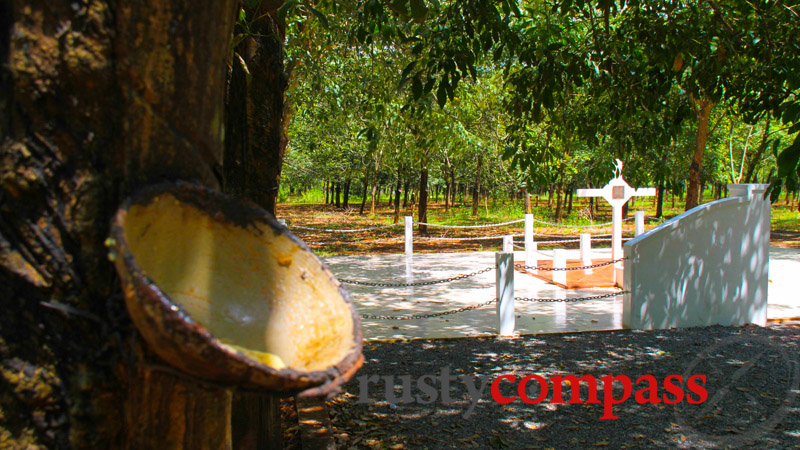
Photo: Mark BowyerThe Long Tan Cross in a rubber plantation outside Vung Tau.
Vietnamese officials have graciously permitted simple memorials to their vanquished former foes to stand on these old battlegrounds.
Commemoration of the much larger and more devastating US presence is unsurprisingly harder to come by. I've found only two traces in all my travels.
The current US Consulate in Saigon, has a replica memorial in its grounds to the men who died defending the complex against Viet Cong attack during the Tet Offensive in January 1968. I understand the original memorial was lost in the chaos of the looting of the Embassy after the evacuation in April 1975.
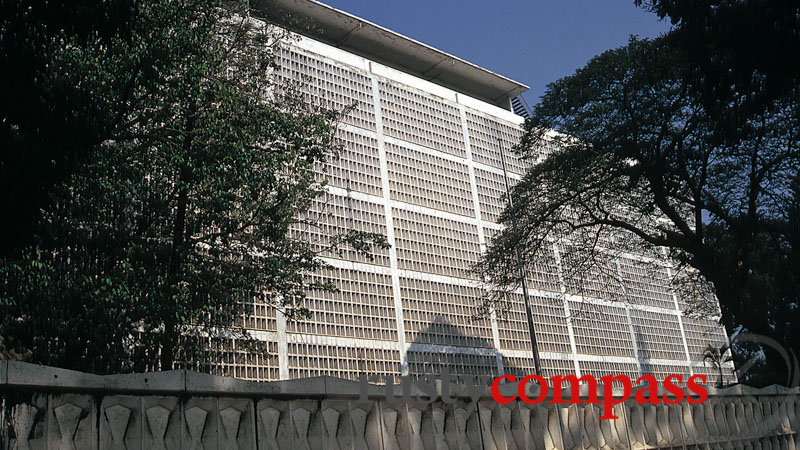
Photo: Mark BowyerThe former US Embassy building in Saigon before it was demolished in the late 1990s to make way for the current Consulate.
The current US Consulate stands where the former US Embassy stood until it was abandoned in April 1975. The original imposing Embassy building was demolished in 1998 to make way for warming US Vietnam relations and the opening of a new Consulate after a long and devastating trade and diplomatic embargo.
The Tet 1968 attack on the US Embassy in Saigon was a terrible blow to US morale and in some minds was a turning point in US public support for the war.
Less than twenty metres away on the other side of the Consulate walls is a memorial commemorating the 16 Viet Cong lives lost while attacking the Embassy compound. It's at the corner of Le Duan St and Mac Dinh Chi St and marks the spot where Viet Cong sappers blew a hole in the Embassy wall to gain access.

Photo: Mark BowyerMemorial to Viet Cong lives lost during the 1968 Tet Offensive attack on the US Embassy.
This must be one of the only monuments anywhere that remembers an attack on a diplomatic post - right outside an operating diplomatic post of the attacked nation. It could be a monument to the fraught complexities of diplomacy itself.
During a visit to Quy Nhon on Vietnam's central coast last year, I stumbled across what may well be the only memorial to a US soldier on Vietnamese soil - excepting the US diplomatic compound mentioned above.
I haven't been able to find out much about it and really only noticed it in passing.
A few kilometres south of Quy Nhon is the Quy Hoa leper colony dating back to French colonial times. It's on a beautiful stretch of beach and was administered by Franciscan nuns during the war.
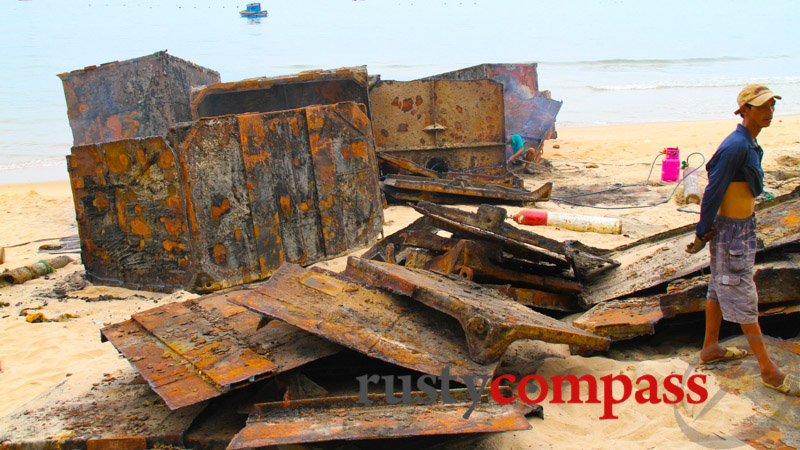
Photo: Mark BowyerA former US military barge is broken up for scrap. Quy Nhon
These days it's open for tourists to visit. It sounds like a macabre attraction but it's actually a very quaint village in a lovely setting. Vietnam's leprosy problem has been largely contained and families here lead dignified simple lives.
Part of the area has been allocated to a "humanity" park celebrating the great names of international and Vietnamese science.
Quy Hoa is also the resting place for one of Vietnam's most celebrated poets, Han Mac Tu, himself a leper who died here in 1940 aged 28.
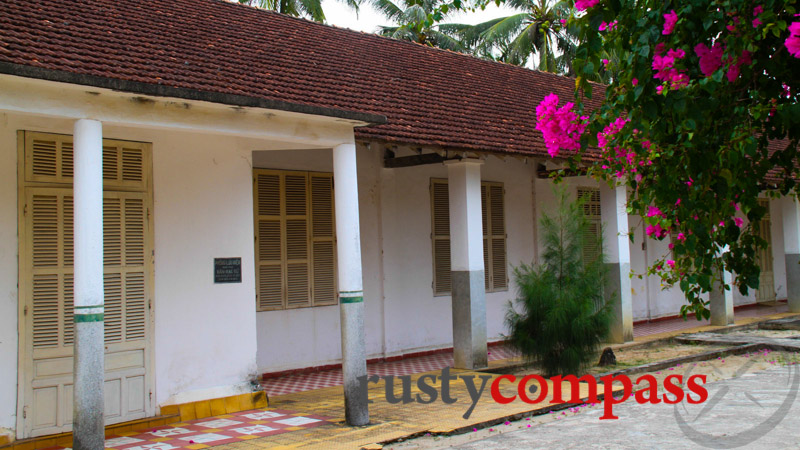
Photo: Mark BowyerFormer residence of leper poet, Han Mac Tu. Quy Hoa, Quy Nhon
During my visit to Quy Hoa, local workers were dismantling an old US military barge on the beach for scrap metal. It was near there that I spotted an abandoned shack with a small sign above it reading "In memory of PFCT Roy Thompson from the members of the 71st Transportation CoTS."
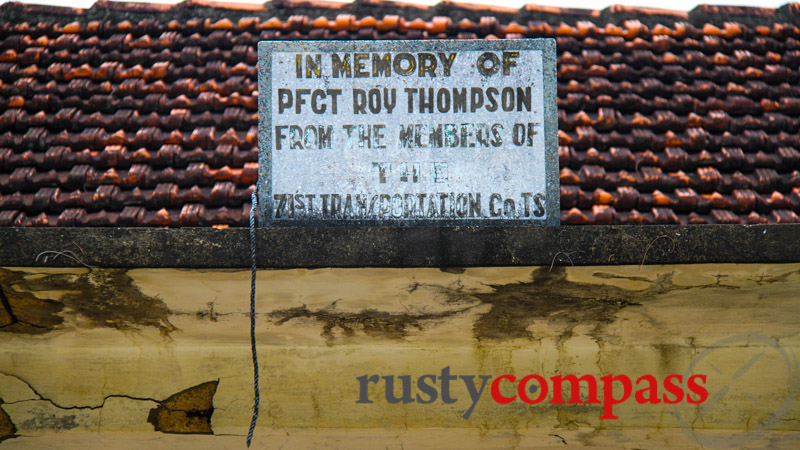
Photo: Mark BowyerHut with a dedication to PFCT Roy Thompson.
I've searched for more information about Roy Thompson but haven't come up with anything. I'm guessing he provided some kind of assistance to the leper community. But I'm not even sure of that.
There was a big US military presence in Quy Nhon throughout the war and there seems to have been quite a lot of support provided to the leper colony by international organisations as well as US troops and US aid organisations.
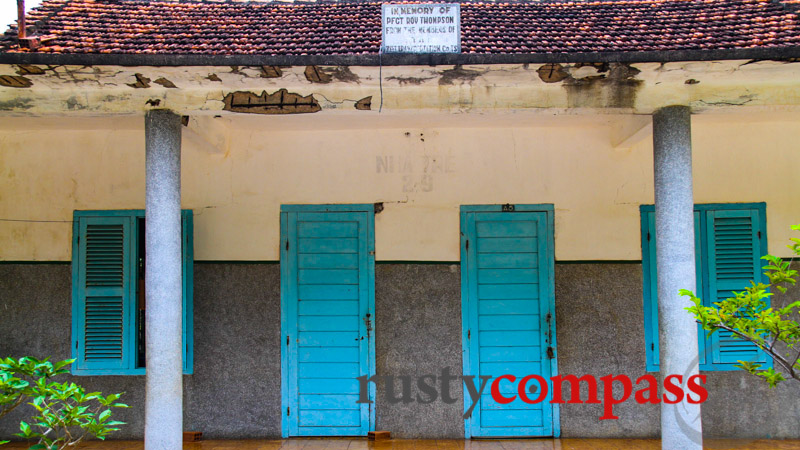
Photo: Mark BowyerHut with a dedication to PFCT Roy Thompson.
The collection of buildings that included Roy Thompson's memorial looked ripe for demolition and I was left wondering how long what may be the only monument to a US serviceman on Vietnamese soil, might survive? And who was Roy Thompson?





4 comments so far
Hi Mark, how are you mate? Thought you might be interested in this information I found about Roy Thompson: http://thewall-usa.com/info.asp?recid=51908 If you follow the button to personal comments on his page there is a message from somebody who says she is his sister. Maybe you can follow up with her and find out more about him. It appears he died in Vietnam of Hepatitis.
http://www.virtualwall.org/dt/ThompsonJR02a.htm It said died of multiply fragmentation wounds John Roy Thompson ON THE WALL: Panel 8E Line 41 PERSONAL DATA: Home of Record Saline, LA Date of birth: 06/18/1945 This page Copyright© 1997-2013 www.VirtualWall.org MILITARY DATA: Service: Army of the United States Grade at loss: E3 Rank: Private First Class ID No: 54365757 MOS: 11D10: Armor Reconnaissance Specialist Length Service: 00 Unit: RECON PLT, HHC, 2ND BN, 28TH INFANTRY, 1ST INF DIV, USARV CASUALTY DATA: Start Tour: 03/17/1966 Incident Date: 06/11/1966 Casualty Date: 06/11/1966 Age at Loss: 20 Location: Binh Long Province, South Vietnam Remains: Body recovered Casualty Type: Hostile, died outright Casualty Reason: Ground casualty Casualty Detail: Multiple fragmentation wounds URL: www.VirtualWall.org/dt/ThompsonJR02a.htm Data accessed: 4/24/2013 super small town btw: http://en.wikipedia.org/wiki/Saline,_Louisiana
he wasnt from 71st transportation
he wasnt from 71st transportation